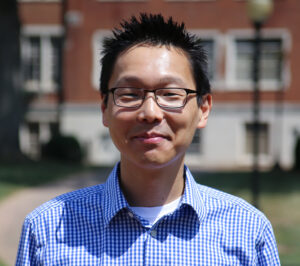
Bringing our Congregations into the Seminary Classroom
How does my teaching connect the learning in my seminary classroom with congregations? As an historian of Christianity in the United States, I am aware that theological education has primarily adopted a trickle-down approach to answering this question—a trickle that flows from professors to students to congregations such that the students are the conduits connecting faculty like me to the many persons and messy challenges in their churches. The traditional method entails professors equipping students to take what they learn and apply it as religious leaders in their churches or church-related agencies. This model relies almost entirely upon students. The professor has one task whereas the student has at least two. Professors are responsible for teaching their subject matter with lectures, discussions, assignments, and exams. Yet, students must first demonstrate comprehension of the subject matter in the given coursework and then discern how to utilize what they have learned in their present and future ministries.
The way that professors help to produce congregational transformation and social change in this paradigm is through their students. Professors teach their students well and these students then lead their congregations with the analytical tools in biblical interpretation, pastoral care, and theological ethics they acquired in the classroom. In other words, the instruction of the professors reaches a multitude of congregations through their students. When the semester is complete, it feels like the professor says to the student, “I can’t go with you to your congregation, but you have my lecture notes, required textbooks, and commentary on your research paper. All this, along with the grace of God, will be sufficient for you. And I guess we can stay in touch by email.”
When I was a seminary student, the process of synthesizing and applying my theological education to my congregational ministry was entrusted to me to figure out by myself. The faculty at my predominantly white seminary conveyed little interest in my personhood as an Asian American and my ministry in a multigenerational, bilingual, and immigrant congregation. In some courses, I felt as though I left my personhood at the door before walking into the classroom to learn about the supposed superiority of theological frameworks and doctrinal formulations shaped by an assembly of white men in seventeenth-century England. Even in the courses in which my personhood was welcome into the classroom, there were not opportunities to integrate what I was learning there with the congregations I had come from and was headed to after graduation.
Like my faculty colleagues in theological education today, I am committed to avoiding the mistakes of my past teachers and forging a better pathway for my students. None of us declare that we are going to do things exactly like they have always been done. And yet, how does our teaching directly and effectively connect the learning in our classrooms with the congregational contexts of our students? In the first few years of my teaching, I devoted time in every class session to prompting students to share about both their congregations and how the subject matter at hand would be received in their congregations. These discussions were insightful, raw, vulnerable, and generative. In recent years, I have made this kind of congregational synthesis and application more explicit in my pedagogy. In addition to discussions, I require students to reflect deeply about their congregational contexts and offer precise analysis connecting our lessons and assigned readings to their contexts, along with the opportunity to express moments of either detachment or potential division.
For example, one prompt calls upon students to present a thick description of their past, present, or future congregation. The subsequent prompts ask students to first construct specific ways they would apply what they have learned from the assigned readings and lessons within such a congregation and then identify the promise and peril of their applications to uncover what is at stake for both their leadership and their congregation. My teaching confronts the long histories and ongoing legacies of racial prejudice, gender discrimination, economic exploitation, and LGBTQIA+ exclusion in American Christianity because I believe it is necessary for seminary classrooms to grapple with, rather than gloss over, past sins and present consequences. I am also convinced that my teaching must employ collaborative pedagogical processes in which my students and I work together to develop strategies and refine skills to help foster incremental change in congregations. Some of our congregations are committed to intersectional justice and social change whereas others are fiercely resistant to Christian approaches that disrupt familiar systems and theologies of race, class, gender identity, sexuality, and American exceptionalism. Bringing our congregations into the seminary classroom is therefore a sobering enterprise that is sometimes more dispiriting than inspiring. But too much is at stake to leave our congregations at the door.
Leave a Reply